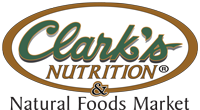Search Healthnotes
Related Topics
Supplement Basics: Amino Acids
Why does the body require amino acids?
- Amino acids are the building blocks of protein.
- Amino acids combine in different ways to make many different kinds of proteins.
- Protein from the diet is broken down into its individual amino acids; they are then used to create the proteins needed by the body.
- Muscle, skin, hair, fingernails, antibodies, many hormones, and enzymes are made from proteins.
What are the essential amino acids?
- All of the different proteins in the body are built from 20 amino acids.
- The body can make some amino acids. These are called non-essential amino acids since they do not necessarily need to be in the diet.
- There are eight essential amino acids that the body cannot make: isoleucine, leucine, lysine, methionine, phenylalanine, threonine, tryptophan, and valine.
- The essential amino acids must be provided in the diet for continued good health.
- Histidine is semi-essential since the body does not always require a dietary source for this amino acid.
Balancing intake of amino acids
- Muscle tissue is broken down if the diet does not provide enough protein.
- The average diet provides more protein than is needed by the body.
- Too much protein can be a burden on the kidneys.
- Foods of animal origin, such as meat, fish, poultry, eggs, and dairy products, contain all of the essential amino acids.
- Plant sources of protein include beans, peas, and grains.
- The need to combine plant-based proteins (such as beans and rice) is an outdated belief; in an average diet protein deficiencies rarely occur. Those following a strict vegetarian or vegan diet may need to be more vigilant in their protein intake.










